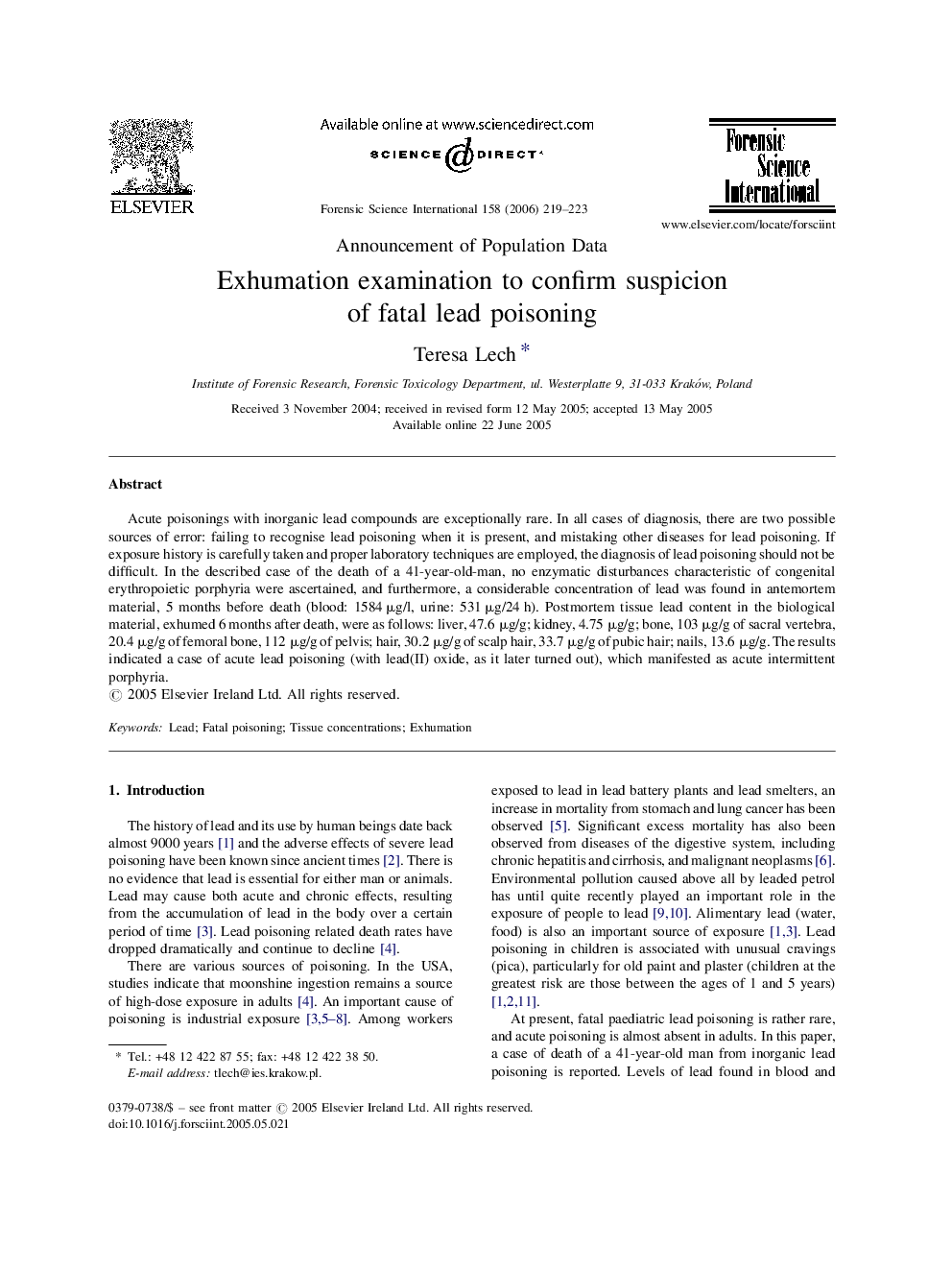| Article ID | Journal | Published Year | Pages | File Type |
|---|---|---|---|---|
| 98214 | Forensic Science International | 2006 | 5 Pages |
Acute poisonings with inorganic lead compounds are exceptionally rare. In all cases of diagnosis, there are two possible sources of error: failing to recognise lead poisoning when it is present, and mistaking other diseases for lead poisoning. If exposure history is carefully taken and proper laboratory techniques are employed, the diagnosis of lead poisoning should not be difficult. In the described case of the death of a 41-year-old-man, no enzymatic disturbances characteristic of congenital erythropoietic porphyria were ascertained, and furthermore, a considerable concentration of lead was found in antemortem material, 5 months before death (blood: 1584 μg/l, urine: 531 μg/24 h). Postmortem tissue lead content in the biological material, exhumed 6 months after death, were as follows: liver, 47.6 μg/g; kidney, 4.75 μg/g; bone, 103 μg/g of sacral vertebra, 20.4 μg/g of femoral bone, 112 μg/g of pelvis; hair, 30.2 μg/g of scalp hair, 33.7 μg/g of pubic hair; nails, 13.6 μg/g. The results indicated a case of acute lead poisoning (with lead(II) oxide, as it later turned out), which manifested as acute intermittent porphyria.
